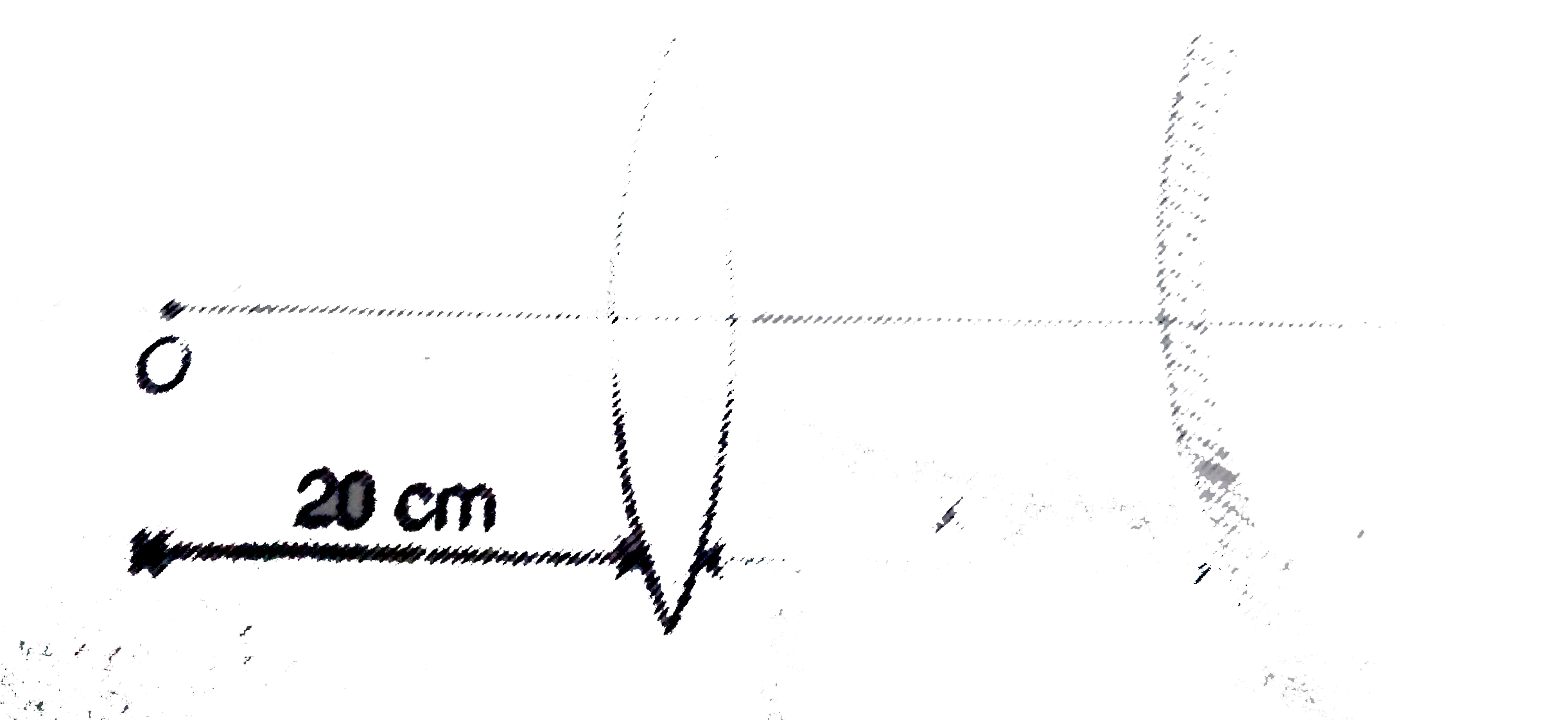An object is placed at a distance f in front of a concave lens of focal length f. Locate its image.
To solve the problem of locating the image formed by a concave lens when an object is placed at a distance equal to the focal length f, we can follow these steps:
Step 1: Identify the Given Values
- Focal length of the concave lens, f (note that for a concave lens, the focal length is considered negative, so f=−f).
- Object distance, u=−f (the object is placed at a distance f in front of the lens).
Step 2: Write the Lens Formula
The lens formula is given by:
1v−1u=1f
where:
- v = image distance
- u = object distance
- f = focal length
Step 3: Substitute the Values into the Lens Formula
Substituting u=−f and f=−f into the lens formula:
1v−1−f=1−f
Step 4: Simplify the Equation
This simplifies to:
1v+1f=−1f
Now, we can rearrange the equation:
1v=−1f−1f
1v=−2f
Step 5: Solve for v
Taking the reciprocal gives:
v=−f2
Step 6: Interpret the Result
The negative sign indicates that the image is formed on the same side as the object, which is characteristic of virtual images formed by concave lenses. The image is located at a distance of f2 from the lens on the same side as the object.
Final Answer
The image is located at a distance of f2 from the lens on the same side as the object.
---
- Focal length of the concave lens, f (note that for a concave lens, the focal length is considered negative, so f=−f).
- Object distance, u=−f (the object is placed at a distance f in front of the lens).
The lens formula is given by:
1v−1u=1f
where:
- v = image distance
- u = object distance
- f = focal length
Substituting u=−f and f=−f into the lens formula:
1v−1−f=1−f
This simplifies to:
1v+1f=−1f
Now, we can rearrange the equation:
1v=−1f−1f
1v=−2f
Taking the reciprocal gives:
v=−f2
The negative sign indicates that the image is formed on the same side as the object, which is characteristic of virtual images formed by concave lenses. The image is located at a distance of f2 from the lens on the same side as the object.
The image is located at a distance of f2 from the lens on the same side as the object.
Similar Questions
An object is placed at a distance 24 cm in front of a convex lens of focal length 8 cm.
Calculate the distance of the image from the lens.
View SolutionAn object is placed at a distance 24 cm in front of a convex lens of focal length 8 cm.
(i) What is the nature of the image so formed ?
(ii) Calculate the distance of the image from the lens.
(iii) Calculate the magnification of the image.
View SolutionAn object is placed at a distance of f2 from a convex lens of focal length f. The image will be
View SolutionAn object is placed at a distance of 48 cm in front of a concave mirror of focal length 24 cm.
a. Find the position of image.
b. What will be the nature of image?
View SolutionAn object is placed at a distance f in the front of a convex mirror. If focal length of the mirror is f, then distance of image from pole of the mirror is
View SolutionAn object is placed at 6 cm distance in front of a concave mirror of focal length 4 cm.
What will be the nature of the image?
View SolutionAn object is placed at 6 cm distance in front of a concave mirror of focal length 4 cm.
Find the position of the image period.
View SolutionAn object is placed at a distance of 12 cm from a convex lens of focal length 8 cm. Find :
the position of the image
View SolutionAn object is placed at a distance of 12 cm from a convex lens of focal length 8 cm. Find :
nature of the image
View SolutionA point object O is placed at a distance of 20 cm from a convex lens of focal length 10 cm as shown in figure. At what distance x from the lens should a concave mirror of focal length 60 cm, placed so that final image coincides with the object ?

View Solution
